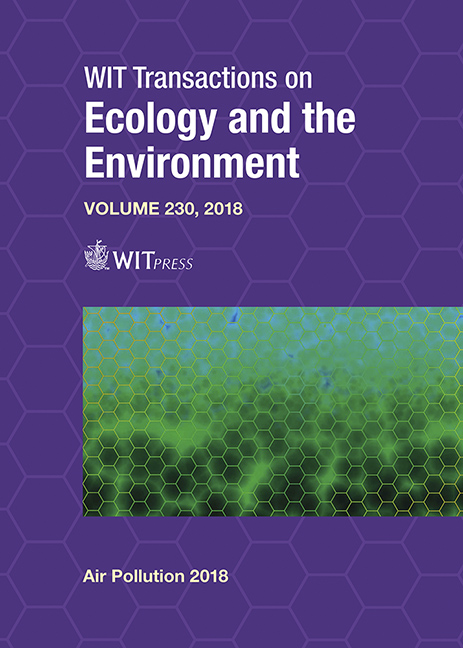CO2 AND CH4 URBAN PLUME OVER A MEDITERRANEAN SEMI-NATURAL SITE IN THE IBERIAN PENINSULA
Price
Free (open access)
Transaction
Volume
230
Pages
9
Page Range
531 - 539
Published
2018
Paper DOI
10.2495/AIR180491
Copyright
WIT Press
Author(s)
BEATRIZ FERNÁNDEZ-DUQUE, ISIDRO ALBERTO PÉREZ, MARÍA ÁNGELES GARCÍA, NURIA PARDO, MARÍA LUISA SÁNCHEZ
Abstract
CO2 and CH4 emissions are the two most significant greenhouse gas emissions in Spain. The current study analyzed the influence of a city urban plume over the final CO2 and CH4 mixing ratio values recorded at the Low Atmosphere Research Centre (CIB station), in the North of Spain. The measuring campaign lasted five and a half years, from 15th October 2010. CO2 and CH4 transport was analyzed through mixing ratio data obtained with a Picarro G1301 analyzer, which is based on cavity ring-down spectroscopy. Wind direction data were obtained at 2-m height. 16-wind direction sectors were considered. CO2 and CH4 detrended mixing ratios above the 90th percentiles were then calculated for each wind sector. Greater values in the southern sectors highlighted the influence of the nearby city of Valladolid, located approximately 24 km southeast. Faster growth in the southern sectors was found, since around 2.51 ppm year-1 (CO2) and 9.33 ppb year-1 (CH4) were obtained compared to 2.36 ppm year-1 (CO2) and 9.03 ppb year-1 (CH4) for the remaining sectors. Finally, 96-h backward air trajectories prior to reaching the CIB station were obtained with the METEX model at 500-m height a.g.l. Results showed a prevailing Atlantic origin of the masses, which finally impacted on the southern sectors, dragging pollutants from this area. The importance of the methodology used here lies in its easy and plausible application for other gases.
Keywords
plume, wind direction, backward air trajectories, METEX, detrended mixing ratios





